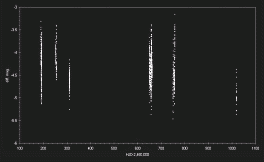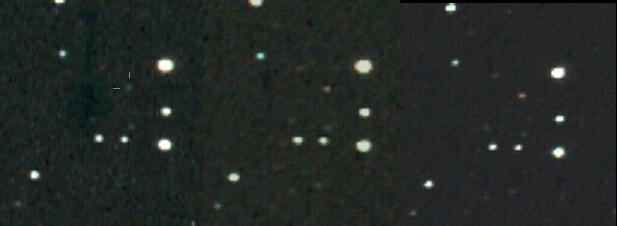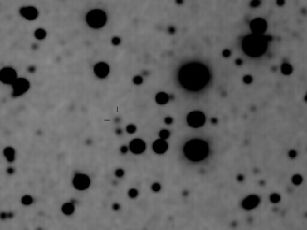
EUVE J2115-58.6
a.k.a. RX J2115.7-5840, Ind 1, CD Ind
This CV was observed at Woomera from April 1996 to July 1998. It is a non-synchronous polar; that is to say, the orbital period and the white dwarf rotation period differ by about 1%.
As a result, it demonstrates considerable variation in overall brightness and in the waveform of the light-curve. The latter varies, in general, between a smooth and nearly flat shape, and one showing a prominent hump for about half the cycle. There may also be present overall trends (brightening or fading) on the light-curve on time-scales comparable, or greater than, the orbital period.
The Woomera data (which show predominantly a modulation based on the WD rotation period) suggest that the WD rotation period is 6579.383+-0.15s. The orbital period is different, and cannot be determined from the Woomera data alone.
Variations may be seen from cycle-cycle, and there are also changes on day-day and longer time-scales.
Diff. mag. vs. HJD : covers entire Woomera data set
As above, but expansion of first "half" of HJD coverage
As above, but expansion of second "half" of HJD coverage. Considerable variation in the overall amplitude, and average magnitude, of the CV is to be noted.
Diff. mag. vs. time (minutes) : for 27-28/7/1997. Five cycles, with an underlying fading trend. Vertical bars show estimated error in the C-V values.
Intensity vs. WD phase : all "humped" Woomera data, shifted in magnitude to remove each night's overall change in brightness, and diff. mag. converted to a ratio of intensities. This shows the general form of the light-curve when phased at the WD rotation period.

VRI composites : white-light time-series data show the CV (by the tic marks) to be in (left-to-right) faint, medium and bright states.It is evident that the CV reddens as it brightens- a characteristic of magnetic CV's.

A "new" variable? : this is a composite image totalling 347 minutes exposure. The limiting megnitude is estimated as around +23. The tic marks show a star which is rather brighter on archival Schmidt survey plates and is therefore variable. No reference to the variability of this star has yet been found.